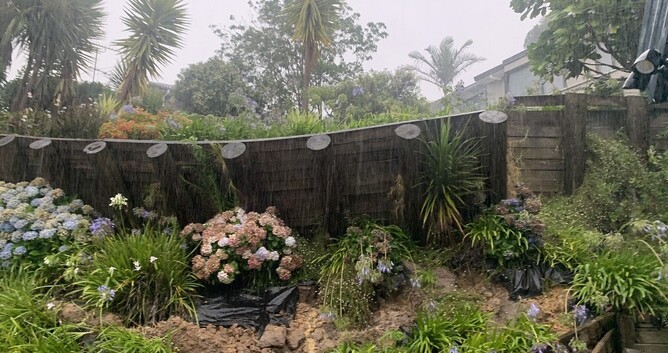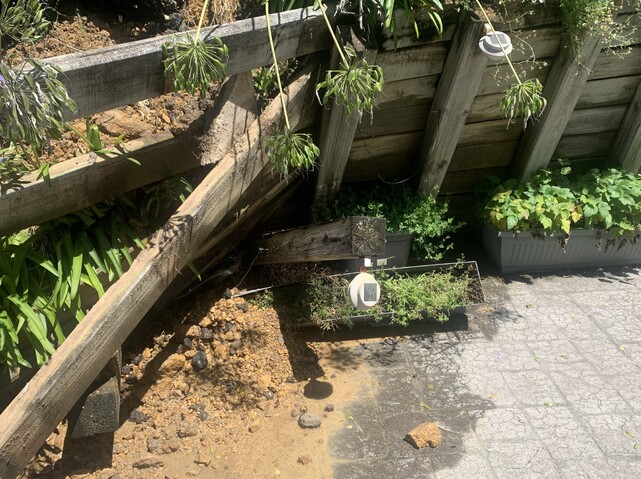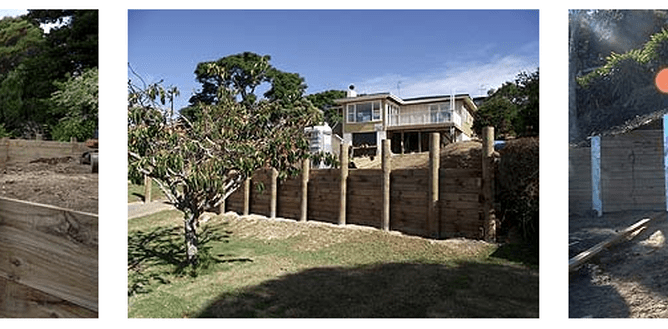Retaining walls are an important feature of many landscapes and are used to prevent soil erosion, create level surfaces, and add visual appeal to outdoor areas. Structures built using piles and posts are a popular choice due to their strength, durability, ease of construction and lower 'built-cost' than most other retaining structures.
According to Dave Stringfield, Manager of both Auckland Aggregates and its sister division, Landscape Structures, now is the time to carry out a thorough inspection of walls.
'The recent heavy rainfall experienced, particularly in Auckland, has placed unusually high amounts of stress on retaining walls with some recently inspected close to collapse. Checking they are still structurally sound and still performing their intended function should be a critical priority right now', says Dave Stringfield.
Source: Landscape Structures - Auckland
So before heading into 'check phase' here are the main reasons for wall failure:
Heavy rainfall causes soil erosion: Retaining walls are designed to hold back and prevent it from eroding or sliding away. However, heavy rainfall can cause soil erosion, which can weaken the foundation of the wall and cause it to fail.
Excessive water will weaken a wall's structural integrity: If water seeps into the soil material holding up the retaining wall, it hugely increases the load the wall is expected to carry. This is especially true for walls built with little or no consideration for future stresses, such as a 1 in 50 year rain event seemingly becoming more prevalent.
Cracks are a telltale sign movement is underway: Over time, retaining walls can shift and settle, which can cause cracks to form in the structure. This can be exacerbated by heavy rainfall, which can cause the soil to shift and move around the wall. This is particularly so when there appears to be increased weight on the wall due to additional back-fill loading.
Source: Landscape Structures - Auckland
Here's our 9-POINT 'CRITICAL WALL CHECK' which could save not only property, but also life.
Look for signs of soil erosion: Inspect the area around the retaining wall for signs of soil erosion, such as exposed roots, rocks, or debris.
Look for cracks or movement in the wall: Check the retaining wall for any cracks or signs of movement. This can include bulging, leaning, or bowing in the structure.
Check for water damage: Look for signs of water damage, such as water stains, mould, or rotting timber.
Inspect the foundation: Check the foundation of the retaining wall for any signs of damage, such as cracks or settling or the wall foundation is exposed above the ground. This typically happens when ground shrinks away from the wall foundations or soil is dug away without considering the likely consequences.
Visible cracks or bulges: If you notice any visible cracks or bulges in the retaining wall or landscape structure, it's important to have it inspected by a professional. Cracks and bulges can indicate that the structure is under stress and may be at risk of collapse.
Uneven settlement: Uneven settlement is a common issue with retaining walls and can occur when the soil underneath the structure shifts or settles unevenly. If you notice any areas where the retaining wall or landscape structure appears to be sinking or settling unevenly, it's important to have it inspected.
Damage to nearby structures: If you notice any damage to nearby structures, such as a patio or walkway, it may indicate that the retaining wall or landscape structure is putting too much pressure on the surrounding area. This can be a sign that the structure needs to be reinforced or replaced.
Drainage issues: Proper drainage is essential for the stability of retaining walls and landscape structures. If you notice any issues with drainage, such as water pooling around the base of the structure, it's important to address them as soon as possible to prevent damage to the structure.
Vegetation growth: While some vegetation growth is normal around retaining walls and landscape structures, excessive growth can be a sign of underlying issues. For example, if you notice vegetation is growing in cracks or gaps in the retaining wall, it may indicate the structure is under stress and needs to be inspected. It is also important trees are not planted directly above the retaining wall as they add significant weight which may not have been considered when the wall was built.
'In short if you notice any visible signs of damage, uneven settlement, damage to nearby structures, drainage issues, or excessive vegetation growth around or on top of a retaining wall or landscape structure, it's important to have it inspected by a professional. By addressing these issues early on, you can ensure the safety and stability of your landscape features for years to come', says Dave Stringfield.




